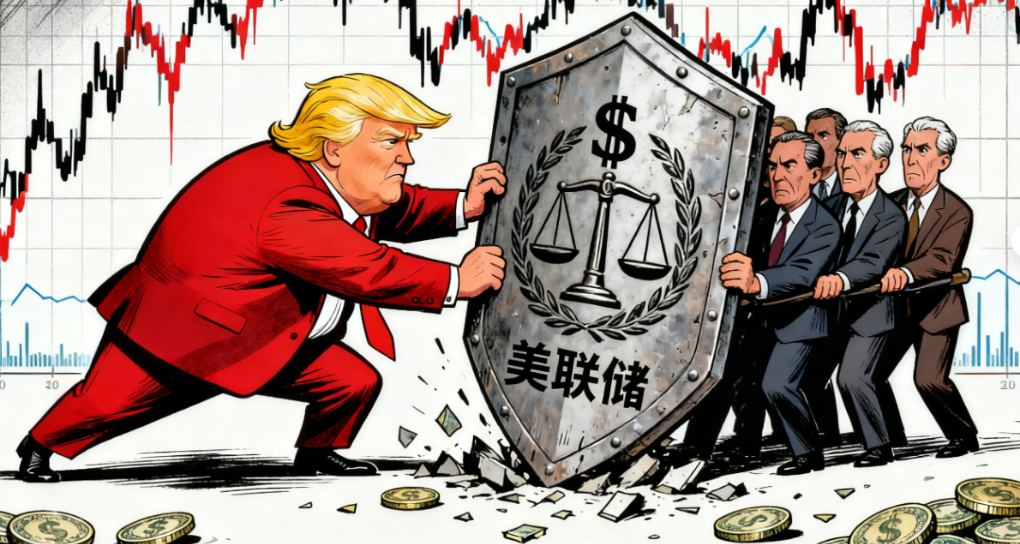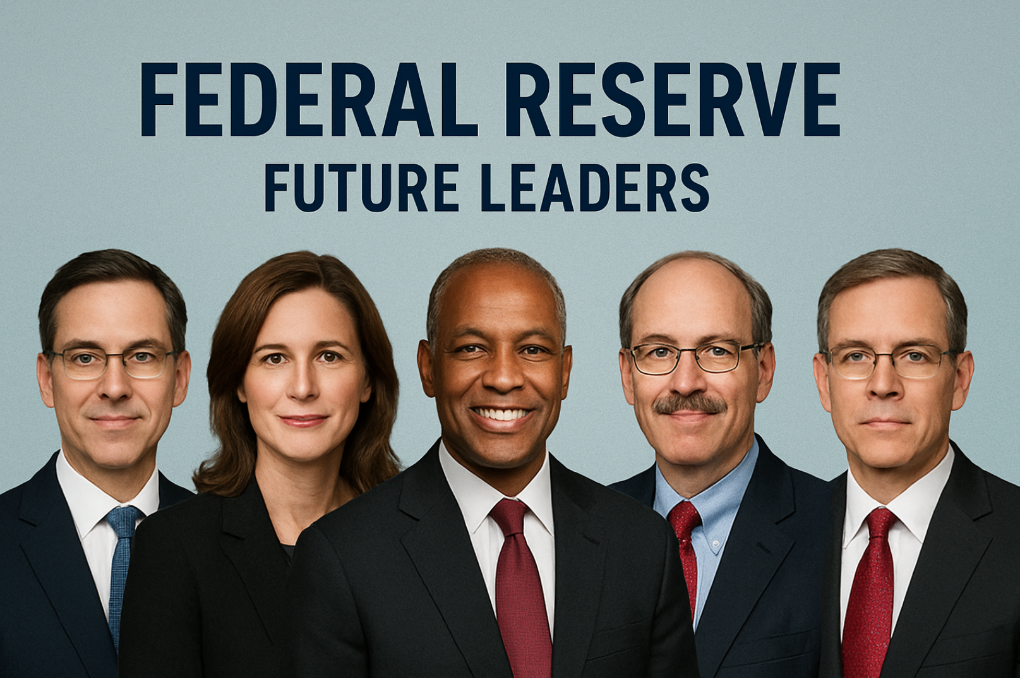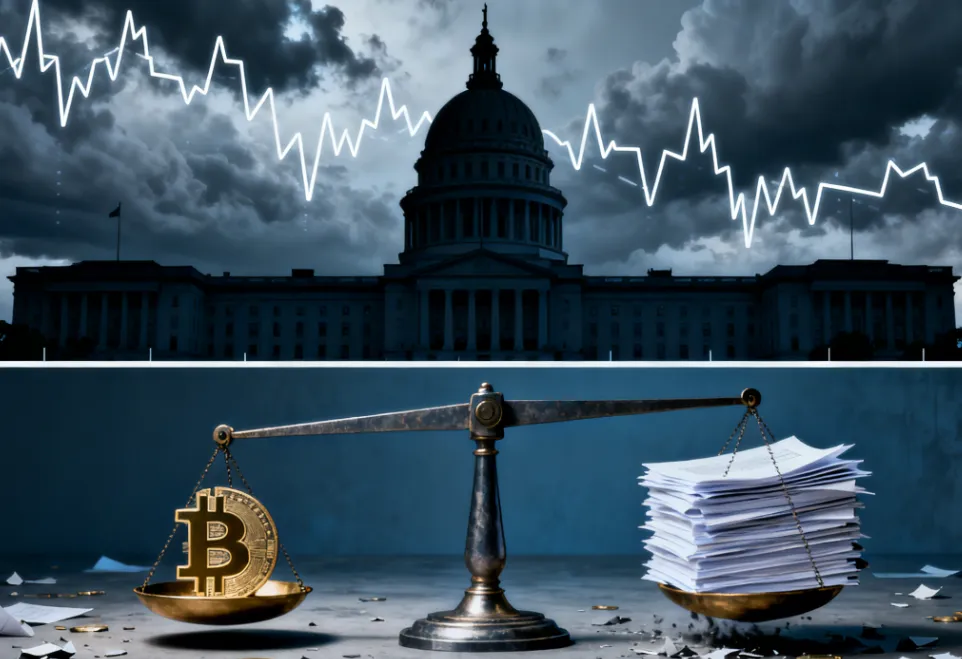Inside the Federal Reserve's policy meeting room, a war without gunpowder is unfolding, with three governors appointed by Trump clashing with several regional Fed presidents, while Chairman Powell struggles to maintain balance.
The Federal Reserve is facing its most severe internal division in decades. On the eve of the December policy meeting, the speeches of two key Fed officials—Governor Waller and Vice Chairman Jefferson—this Monday highlighted the profound disagreements within the institution regarding the path of interest rates. On one side are the "doves," who are concerned about a weak labor market and support rate cuts; on the other side are the "hawks," who are more worried about inflation risks.
This debate is occurring in an unusually tense context: President Trump continues to exert pressure on the Federal Reserve, publicly calling Chairman Powell "stupid" and threatening to replace him "at this moment."

1. Internal Divisions: Three Dissenting Votes and Different Factions
Renowned financial journalist Nick Timiraos, known as the "New Federal Reserve Correspondent," pointed out that regardless of whether the Fed cuts rates in December, it will face at least three dissenting votes. If rates are held steady, it will face opposition from the three governors appointed by Trump; if rates are cut by 25 basis points, another group of at least three officials may oppose it.
The Federal Reserve has split into two major factions:
● One faction of officials is more concerned about inflation risks. U.S. inflation has been above the Fed's 2% target for four consecutive years. This faction has recently expanded to include four regional Fed presidents with voting rights this year, as well as Fed Governor Barr.
● The other faction of officials—including all three governors appointed by Trump—focuses more on the labor market. They worry that their colleagues are overemphasizing high inflation risks, which could lead to a completely avoidable recession.
2. Key Figures: Waller and Jefferson's Different Positions
A leading candidate for the next Fed chair, current Fed Governor Waller clearly stated on Monday that he supports another rate cut at the December policy meeting.
● Waller stated, “The labor market remains weak and is close to the critical level of growth stall.” He also noted that inflation, excluding tariff impacts, is “relatively close” to the Fed's 2% target.
● Waller candidly remarked: “I am not worried about accelerating inflation or significantly rising inflation expectations; my focus is on the labor market.” Weak consumer confidence, sluggish wage growth, and low demand for big-ticket items like housing and cars all indicate that the economy still faces unrecognized headwinds.
In contrast to Waller's clear stance, Vice Chairman Jefferson's position is more cautious.
● Jefferson's speech on Monday reflected the dilemma currently facing the Fed. He acknowledged that the risks of stubborn inflation and weakening employment coexist—these two threats point to entirely opposite policy prescriptions.
● Jefferson stated: “The changing balance of risks underscores the need for caution and a gradual approach to rate cuts.”
3. Trump's "Purge" of the Federal Reserve
The Trump administration is subtly conducting a comprehensive personnel "purge" of the Federal Reserve, with a level of intervention that few Fed observers could have imagined.
Increasing signs indicate that Trump's war against the Fed is "escalating"—given the current developments, Trump is highly likely to "control" the Federal Reserve Board, which consists of seven governors, and even threaten the appointments of the twelve regional Fed presidents.
Among the seven Fed governors, Trump already has several allies and supporters:
● "Supporters" Two Seats: Governor Waller and Vice Chair Bowman. These two dove officials voted against maintaining the status quo in the Fed's July decision—both were initially nominated by Trump.
● "Co-opted" One Seat: Vice Chair Jefferson. He unexpectedly appeared on the "expanded" list of candidates for the next Fed chair disclosed earlier this month.
● "Replaced" One Seat: Governor Cook. Trump has indicated that he will nominate Stephen Moore, the chairman of the Council of Economic Advisers, to fill this newly vacated position on the Fed Board.
● "Intimidated" Two Seats: Governor Cook and Governor Barr. Recently, Governor Cook has been embroiled in a "mortgage fraud" scandal, which the market interprets as a signal that Trump's faction is attempting to force him out.
If Trump successfully removes and replaces Cook, he will have appointed four of the seven Fed governors. Additionally, when Powell's term as Fed chair ends in May 2026, he will typically resign from the Board, giving Trump the opportunity to appoint a fifth governor.
4. Five Candidates: The Future Leadership Landscape of the Federal Reserve
Trump may appoint a new chair when Powell's term ends next May, add at least one new governor, and potentially influence the selection of regional Fed presidents. Overall, the Fed's policy stance may trend dovish—this aspect could be constructive for the market.
However, the key question is whether the new chair and governors are seen as credible professionals or as "political loyalists" focused solely on rate cuts while neglecting inflation risks. If the latter, the market may demand higher inflation compensation, leading to rising long-term yields.

The five most likely candidates to succeed Powell include:
● Fed Governor Christopher Waller: As a Trump-appointed Fed governor, he supported rate cuts at the July meeting and is a leading candidate for the next Fed chair.
● Fed Vice Chair Michelle Bowman: Also appointed by Trump, she supported rate cuts at the July meeting.
● White House National Economic Council Director Kevin Hassett: Seen as a close economic advisor to Trump, he has publicly stated he would be willing to take over if nominated.
● Former Fed Governor Kevin Warsh: Listed by Trump as one of the top candidates.
● BlackRock's Chief Investment Officer for Fixed Income Rick Rieder: Shares Trump's views on rate cuts and cryptocurrency policy.
5. Far-Reaching Consequences of Impaired Independence
● The independence of the Federal Reserve is facing severe challenges. UBS Asset Management noted in its September macro monthly report that Trump is likely to influence the Fed's personnel composition in the coming quarters; if this leads to significant changes, it could damage the Fed's credibility.
● If Trump successfully "controls" the Fed Board, it could mean that the remaining twelve regional Fed presidents might also be replaced at his discretion.
● Although the nominations of regional Fed presidents are determined internally by the regional Fed banks (the White House has no authority to intervene), the Fed Board votes on whether to approve their nominations or reappointments. In other words, if a majority of the Fed Board members are willing, they could dismiss some or all regional Fed presidents by the end of February next year—though this has never happened in the Fed's history.
● Barons columnist Jon Hilsenrath warns that while Trump hopes to lower short-term rates, this could come at the expense of the Fed's anti-inflation credibility. “A loose Fed could even produce confusing effects, pushing up long-term rates.”

Trump's ambition to reshape the Federal Reserve far exceeds external expectations. If he successfully arranges for loyalists to enter the Fed Board and even influences the appointments of regional Fed presidents, the future decision-making balance of the Fed may tilt more towards political considerations.
After Powell's term as chair ends next year, he will not only lose his leadership position at the Fed but will also typically resign from the Board, paving the way for Trump to create a Fed Board entirely composed of his appointees.
Join our community to discuss and grow stronger together!
Official Telegram community: https://t.me/aicoincn
AiCoin Chinese Twitter: https://x.com/AiCoinzh
OKX benefits group: https://aicoin.com/link/chat?cid=l61eM4owQ
Binance benefits group: https://aicoin.com/link/chat?cid=ynr7d1P6Z
免责声明:本文章仅代表作者个人观点,不代表本平台的立场和观点。本文章仅供信息分享,不构成对任何人的任何投资建议。用户与作者之间的任何争议,与本平台无关。如网页中刊载的文章或图片涉及侵权,请提供相关的权利证明和身份证明发送邮件到support@aicoin.com,本平台相关工作人员将会进行核查。




